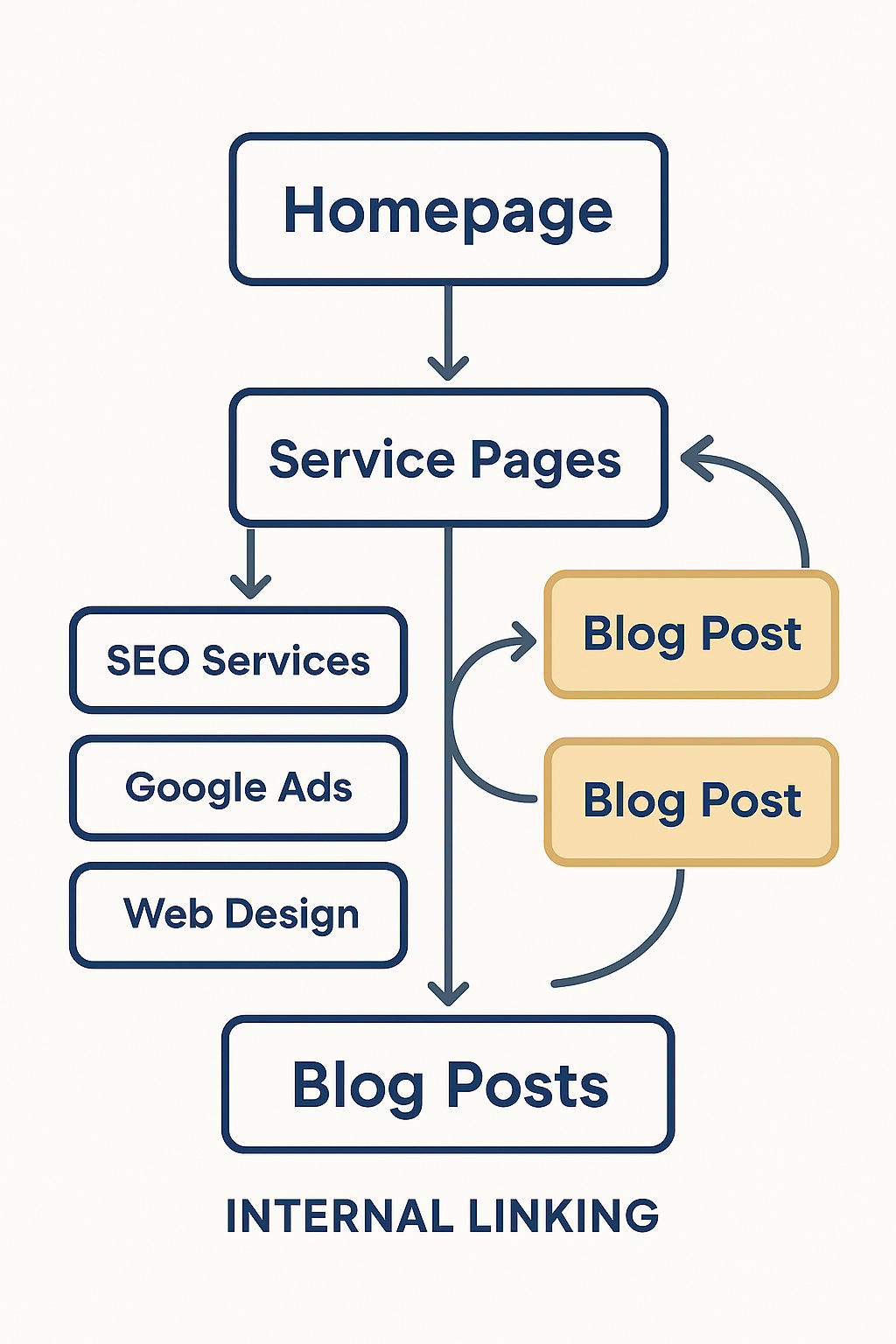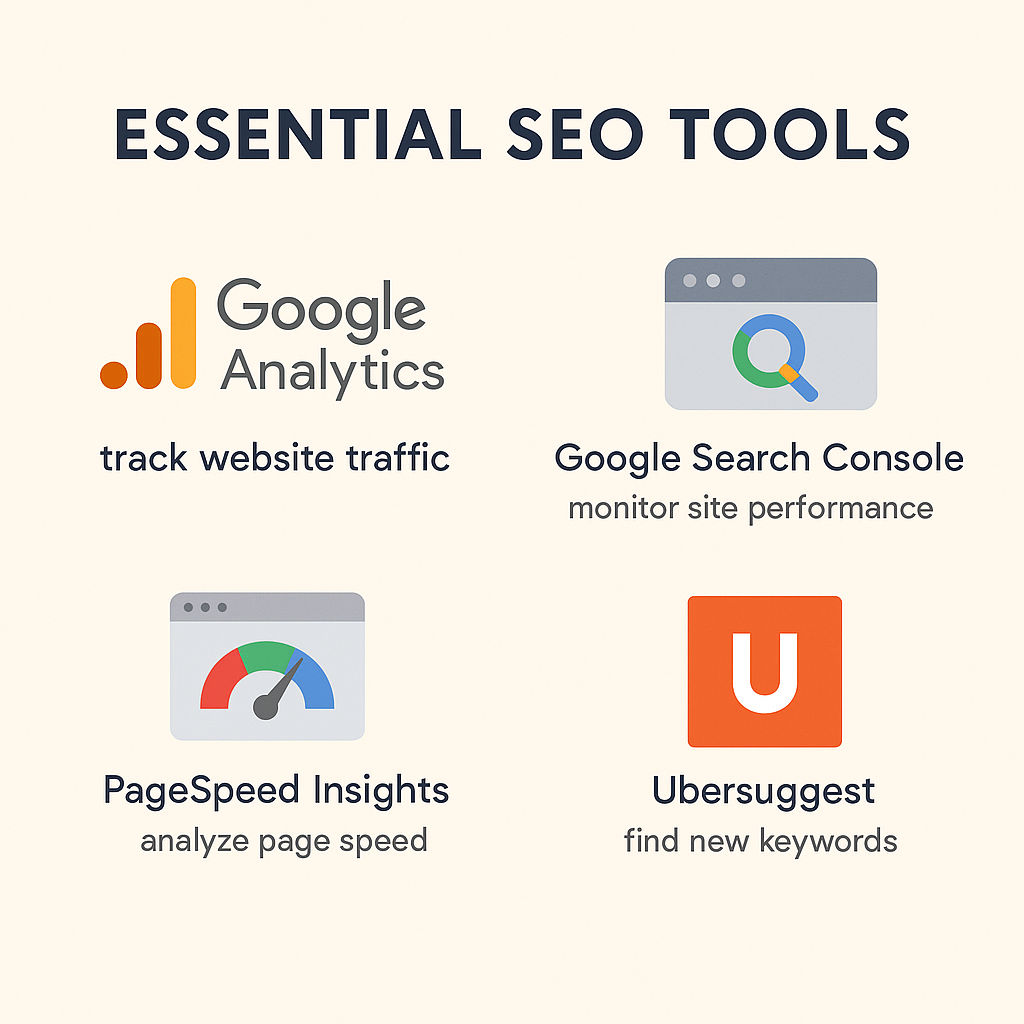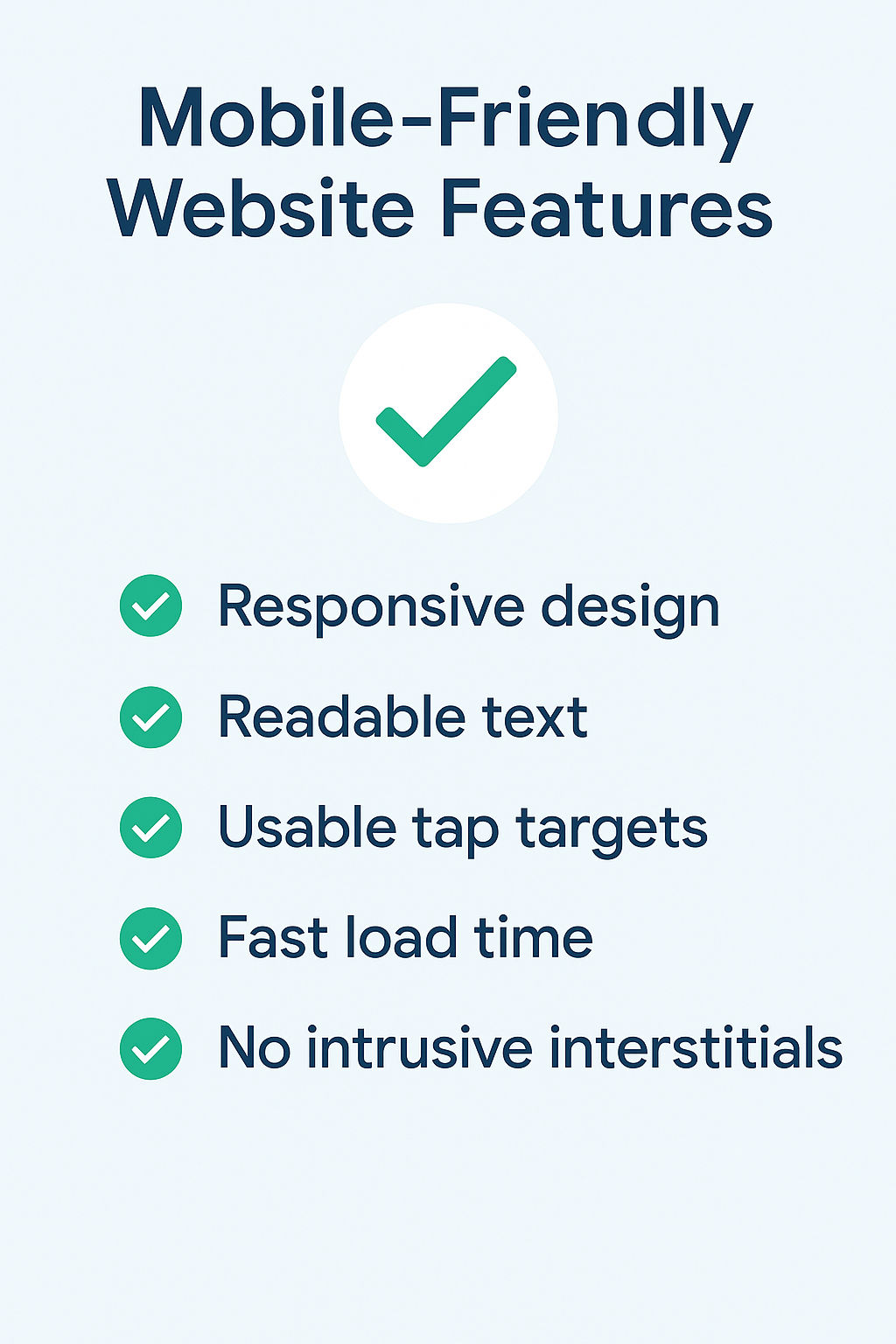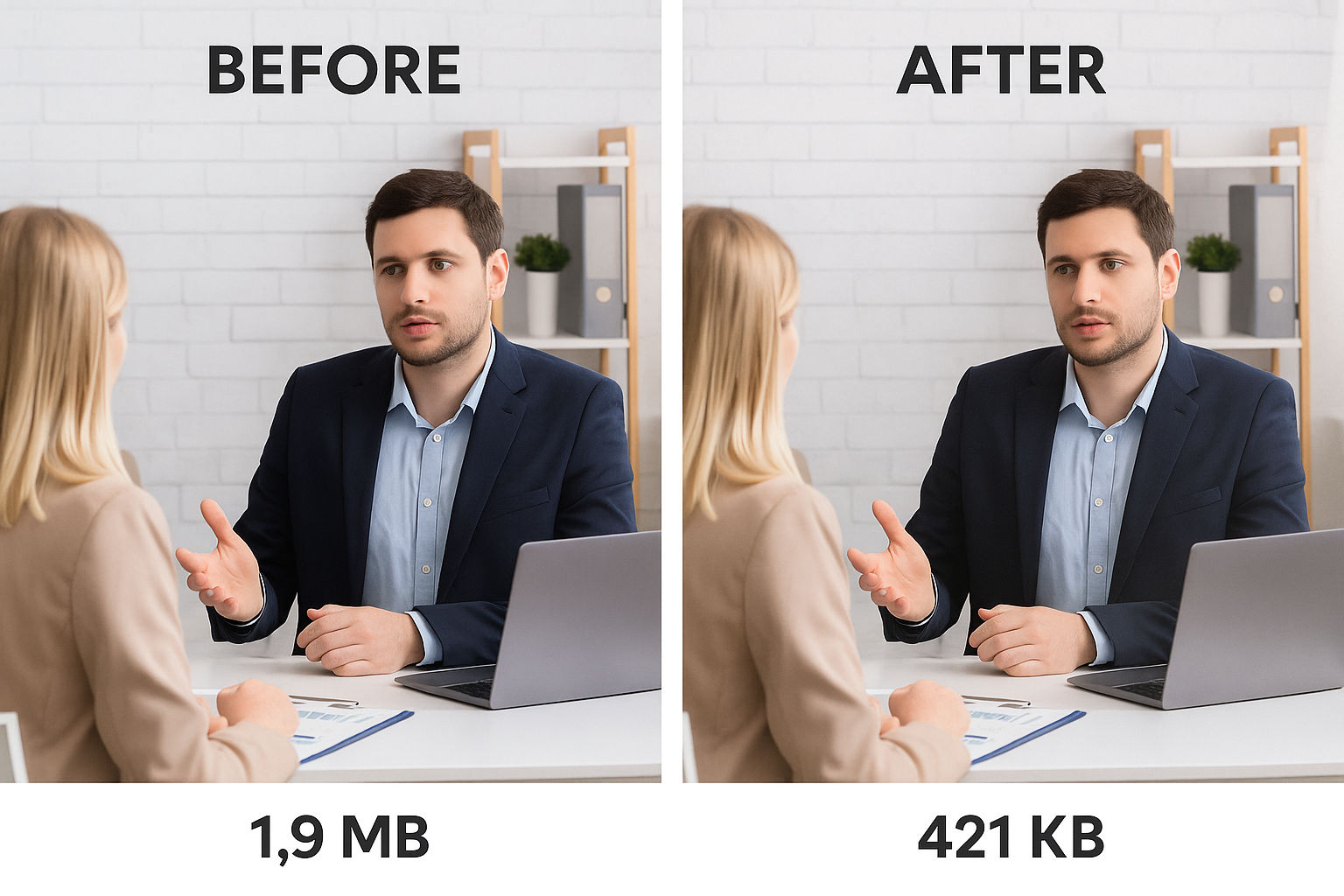Part 7 of the SEO Made Simple Series for Business Owners
If content is king, links are its messengers. Search engines like Google use links to discover new pages and assess how valuable your content is. Without a solid link structure—both internally and externally—your SEO performance will struggle.
This post explains the two types of link building every business owner should focus on: internal linking (within your site) and external backlinks (from other websites). Done right, they build authority, improve rankings, and drive real traffic.
Why Links Matter for SEO
Links help search engines:
- Find your content
- Understand the relationship between pages
- Evaluate authority and trustworthiness
The more quality links pointing to a page, the more likely it is to rank.
Internal Linking: Boost SEO from Within
What it is: Linking from one page of your website to another relevant page.
Why it helps:
- Spreads link equity (ranking power)
- Helps Google crawl your site more efficiently
- Keeps users engaged longer
Best practices:
- Use descriptive anchor text (e.g., “learn more about local SEO”)
- Link from blog posts to service pages
- Include 2–5 internal links per post or page
- Update old posts with links to newer content
Example:
In our guide to mobile usability, we covered how page speed affects rankings.
External Linking: Earning Backlinks for Authority
What it is: Getting other websites to link to your site (backlinks).
Why it helps:
- Builds domain authority
- Increases referral traffic
- Acts as a vote of confidence in your content
White-hat ways to earn backlinks:
- Guest posts – Write value-packed content for other blogs in your niche
- Business directories – List your business on Yelp, BBB, local chambers, etc.
- Partnerships – Ask vendors or collaborators to link to you
- PR mentions – Reach out to local news or community blogs with a story
- Content marketing – Publish stats, guides, or tools others will want to reference
What Makes a Good Backlink?
Not all backlinks are created equal. A good backlink comes from:
- A high-authority website
- A relevant source (same industry or location)
- Contextual placement (not in a footer or sidebar)
- Natural anchor text
Avoid spammy link schemes, paid links, or irrelevant directories—they can get your site penalized.
Link Building Checklist
- Link from every blog post to a relevant service or product page
- Update old content with new internal links
- Submit your business to 5 reputable directories
- Reach out to 1 partner for a backlink
- Create one shareable blog post (guide, checklist, or infographic)
Final Thoughts
Effective link building is about relationships, structure, and value—not shortcuts. Focus on internal links for clarity and user flow, and build backlinks through genuine outreach and helpful content.

Open a few of your existing blog posts. Do they link to your services? Are they linked from anywhere?
If not, you’re missing out on valuable ranking power. Request a free internal link audit, and we’ll map out your site’s missed opportunities and linking strategy.







